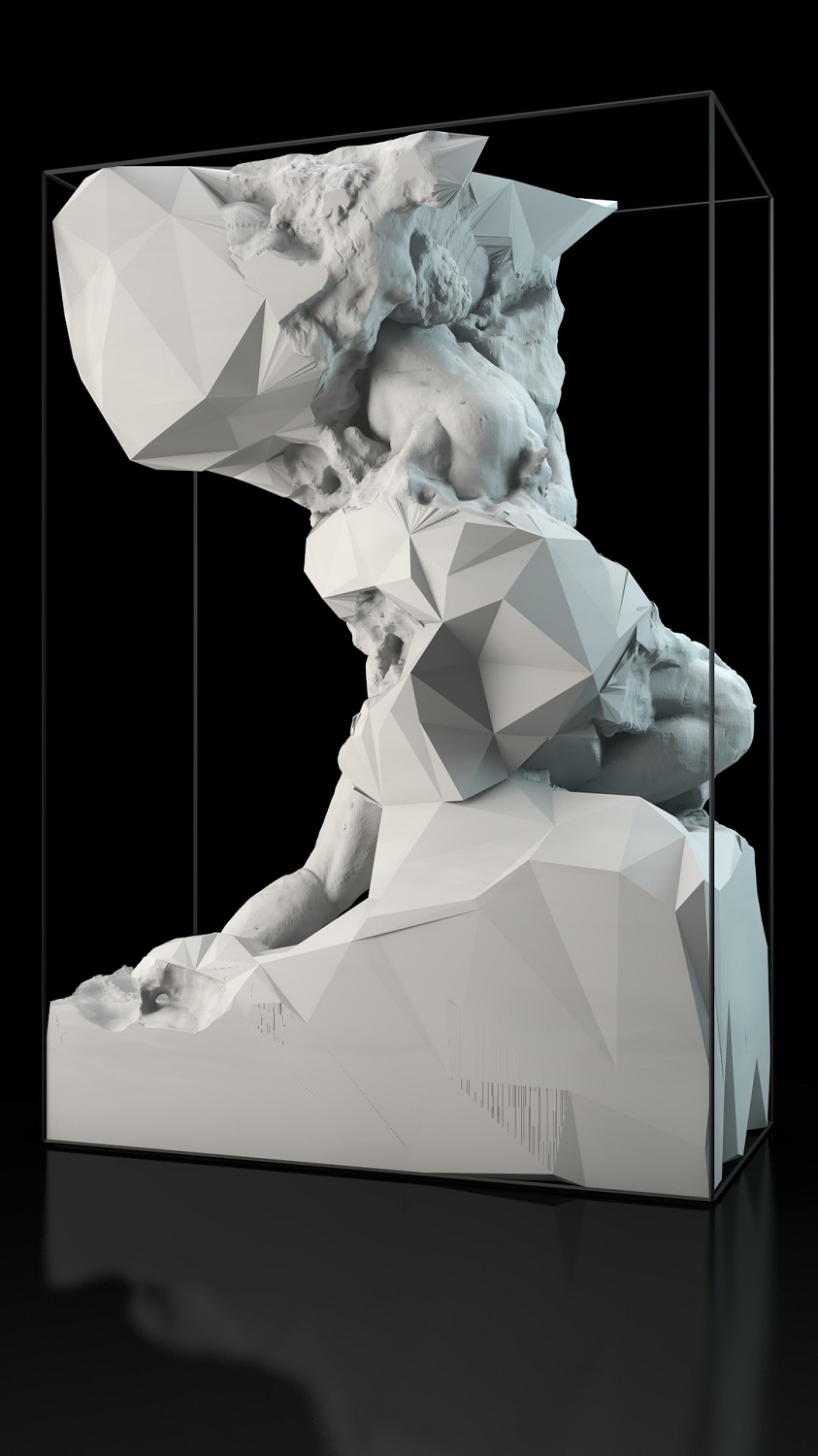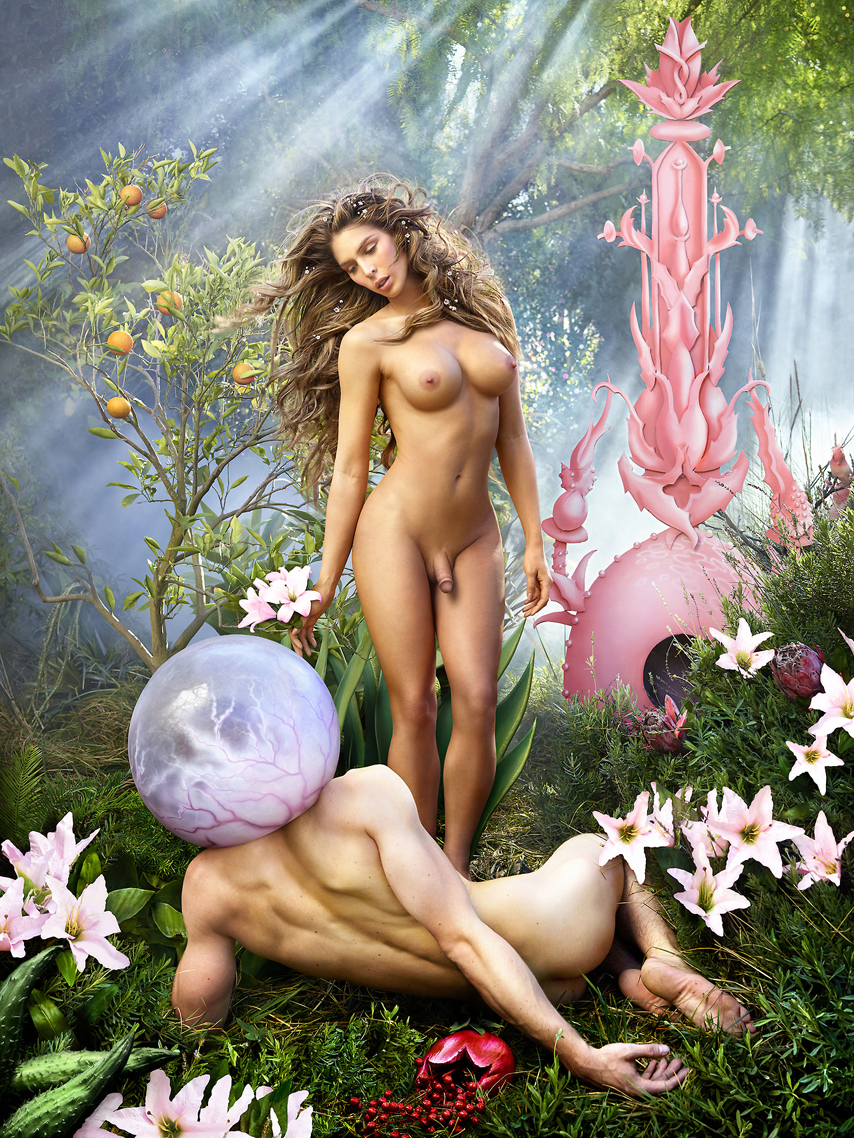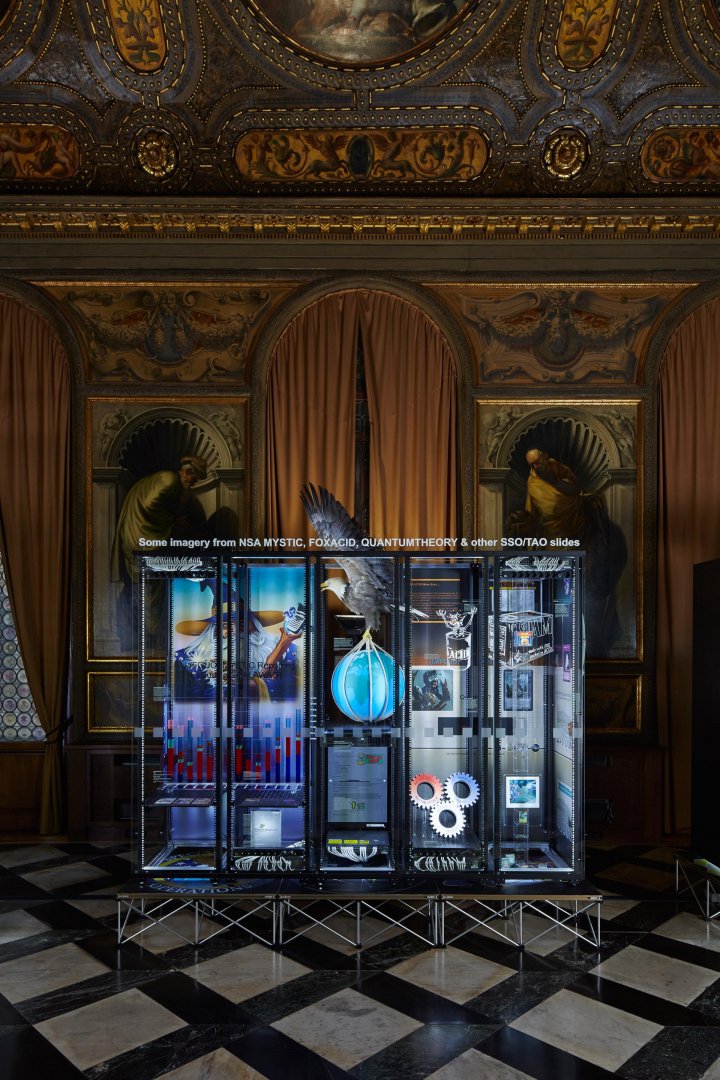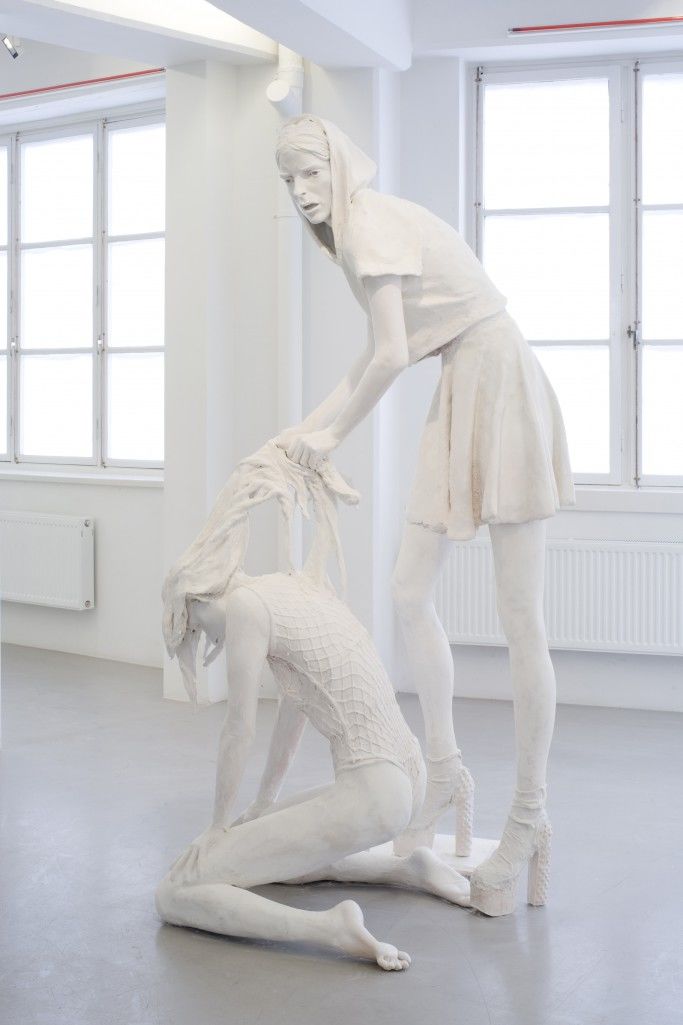ДЭВИД ЛАШАПЕЛЬ
ديفيد لاشابيل
大卫·拉切贝尔
デビッドラシャペル
Once in the Garden
LaChapelle and the organizers of the Life Ball revealed a new poster inspired by the theme of this year’s Life Ball, “The Garden of Earthly Delights.” The photographer captures Carrera fully naked, standing in a surrealist eden reminiscent of Hieronymus Bosch’s fantastic Renaissance paintings. Two versions of the poster show Carrera alternatively with female and male genitalia. “Gender lines are blurred and every person is unique in how they see themselves,” David LaChapelle explains. “For me the body is more than something to be looked at as an object of sexual gratification. The body is a beautiful housing for the soul that we are celebrating in this picture.”The tagline accompanying the photos, “I’m Adam, I’m Eve, I’m Me” also struck a chord with the model. “Your gender should not matter in your heart or in the way you express your personality,” Carmen Carrera says. “We shouldn’t be afraid to stick to a model, because there are so many types of diverse people on this planet. My message is: beauty has no gender. At the end of the day beauty is beauty.”














